This post was intended to be a collection of thumbnail reviews of the spring Peoples’ Symphony Town Hall concerts. During the colder months, these Sunday matinée performances provided the perfect excuse to hop over to the beautiful main reading room of the research library and jot down a few thoughts. But I didn’t feel like writing about all the Sunday concerts … particularly after I spotted The New Yorker’s Alex Ross (I’m pretty sure it was him!) in the lobby during the intermission of the Ebène Quartet’s performance; and rather than put him in a verbal headlock with my own clearly superior review, I figured I’d let him and his struggling little weekly take a crack at it. Then there were a few Saturday shows (held evenings at Washington Irving High School, on 17th Street) that I did feel like writing about. Then I thought, well, I’ll just stick to piano … but that didn’t work either. What follows, then, is a collection of thumbnail reviews without any overarching program. Even “thumbnail” is probably a bad description, unless you have (1) very large thumbs or (2) very long nails.
*
On January 30th, Hélène Grimaud attacked Wolfgang Amadeus Mozart’s piano sonata K310 as if it were the work of a high romantic. The sonata defended itself reasonably well, certainly better than many a Mozart sonata might under similar circumstances. Not that I’m one to complain; I often find myself seeking out what is proto-romantic in Mozart; the tempestuous K310 is case in point (the fantasie in C minor, K475 is another). Except that there was something muddled about Grimaud’s execution, too—a combination, I think, of too much pedal and an overemphasis on the left hand. (I felt similarly about her performance of the Liszt B minor sonata, different as that piece is: much of it went by in a blur, like near woods from the window of a speeding train.) That noted, there was a dynamic intensity to her playing I rather admired; she brought something out of that Mozart sonata I hadn’t heard before.
I ended up gravitating toward the modern pieces, one entirely unfamiliar to me (the opus 1 sonata by Alban Berg, a wonderful seething ocean of notes), the other the six Romanian folk dances (BB 68) by Béla Bartók. Grimaud played these dances with a crispness and luminosity that nothing else in the day’s program matched. It made me want to hear whatever recordings she might have of Bartók. (Just one thing: I counted only five. Maybe she was tired from all that Liszt? Indeed, she played no encore.)
Something else refreshing about this concert: the Bartók was last, rather than squished innocuously into the middle of the program. Most concerts would have flipped the order, put the Bartók next to the Berg and ended with the Liszt. Modern music is just too bitter a taste for an audience to leave with. We have to have dessert. I guess this is the reason why—to mix my culinary metaphors—we’re so often offered 20th-century sandwiches on 19th-century bread. I’m reminded of the famous diner scene in Five Easy Pieces, the one where Jack Nicholson can’t get plain wheat toast, and so orders a chicken sandwich and then asks the waitress to hold everything—including the chicken. “You want me to hold the chicken, huh?” she says, arms going akimbo. “I want you to hold it between your knees!” Nicholson spits back.
So it is with the 20th century: many patrons, it seems, would have performers hold the Berg, Bartók and most of what followed between their knees.
*
Pianist Inon Barnatan appeared at Washington Irving High School’s auditorium on the evening of February 26th with a program unified under the theme “Darkness Visible.” According to the program notes, “All the pieces reflect an awareness of what lies beneath.”
This theme was perhaps most clearly articulated in the Thomas Adès piece of the same name, and in the Schubert sonata with which the program concluded. The former was really revelatory, built around metastasizing trills pierced by stunned notes, single tones that the young pianist put his whole body behind, as if a current had run through him, Kristallnacht phrases giving way to barely-audible rumblings. “Darkness Visible” is only the most recent of several Adès pieces for piano I’ve heard in performance over the previous year or two; they have been consistently impressive.
The Schubert was remarkable in part for the somewhat affectless way Barnatan played the first movement. Once I became accustomed, it allowed me to hear connections to earlier Schubert sonatas that I had not noticed before. I say this in part because, despite its cannibalized final movement—its main theme is a reworking of the second movement of the D 537 sonata, which was never published in Schubert’s lifetime—the last sonatas (the D 958 through 960) have always seemed to me a breed apart, and very much on a par with the better-known late sonatas of Beethoven. What makes the D 959 stand out even from this elect group, however, is the stunning “what lies beneath” moment in the middle of the second movement. The movement begins with two turns through a funereal waltz … when, instead of a new variation, a long, gloaming figure gives way to an eight-note platform for a trill; the left hand mirrors it—and all at once the veil is rent, the score flung about the room, and you’re looking, I don’t know, fifty, a hundred years into music’s future, a death’s head staring back at you from the other side. The only way to restore “equilibrium” is through a series of closed-fist strikes, reminiscent (in this program, together with some of the figures directly preceding it) of the Adés … but as in any narrative, this new equilibrium is of a totally different order than the one with which the movement began, the difference signaled by the interjection of echoing notes, mournful looks backward. Barnatan handled both elements of the movement beautifully, all measured but menaced lyricism at the beginning and end, in the middle all attack and fury.
The rest of the program was similarly striking: the exuberant Ravel valse, Britten and Debussy. I don’t want to end, though, without mentioning the second encore. Did my ear deceive me, or was that a sonata by Domenico Scarlatti? In his biography of Scarlatti (post pending), Ralph Kirkpatrick disparages the (mis)use of Scarlatti’s music as an empty vessel into which a pianist could pour his virtuosity. But for someone who grew up well after Kirkpatrick’s time, when one is much more likely to hear Schubert for an encore than Scarlatti, this was both a pleasant surprise and an unmitigated pleasure.
My one complaint: the auditorium. Understandable that some patrons might have to leave before the end of the Schubert, but they turned it into a sonata for piano and squeaking door. Oy. Then again, what with the “darkness visible” theme, it wasn’t hard to imagine the door as the entrance to a crypt; and all the white heads I could see looking toward the stage turned from a cast for I, Claudius into so many memento mori.
*
I went to see pianist Garrick Ohlsson a number of years back on the campus of the University of Utah, while I was a graduate student there. I’ve sort of avoided him ever since. My recollection is that his playing was pretty wooden—and this from the first American pianist to win the International Chopin competition (in 1970), and who played an all-Chopin program at the Utah concert, if memory serves. That concert was at the newly-renovated Libby Gardner Concert Hall, in the music building of the university campus. I remember Billy Taylor (R.I.P.), whom I also had the privilege to see there, looking the hall up and down from the stage, saying, almost to himself, “Nice hall, nice hall, nice hall …” And so it is. Ever since hearing Ohlsson there, though, I’ve wondered if the acoustics were to blame, something like that infamous concrete slab under the stage at Carnegie Hall, only removed after nine years of musicians’ complaints.
Ohlsson’s March 6th performance at the (so far as I know) acoustically-unchallenged Town Hall was a chance to re-assess the pianist … and likely my own taste as well. I have to admit that I stayed for only for the first half, though not for anything having to do with Ohlsson. The second half was all Granados, and I’ve been so spoiled by guitar transciptions of this composer’s music that I have a hard time appreciating him on piano. Anyway, given that this was a re-assessment, the all-Chopin first half seemed more than adequate.
The opening nocturne in F was not promising, but Ohlsson loosened up for some of the selections from Opus 25 etudes that followed, particularly the limpidly-executed #1 (“The Wind Harp”), and in the odd, loping, thoroughly enjoyable way he took the #2 for a walk. Overall, he played the etudes more slowly than I am accustomed to hearing them; and between this and his restraint with the pedal, I sometimes got the impression that he was dissecting Chopin rather than interpreting him. The etude #7, for example, depends so much on a dialogue between the hands, as the melodic line, carried by the left, dances around, meets, and sometimes barrels right through the gently persistent chords in the right. In Ohlsson’s hands, however, the piece seemed to lose its way: the two elements never coalesced into a single focus of expression. In the end, the etude sounded ponderous instead of profound.
This was decicedly not the case, though, with his spirited rendition of the awesome polonaise in F sharp minor. Perhaps this piece is simply a more adequate vehicle for his power. The scherzo #1 was similarly exciting—those brazen chords in the finale still clang in my ear’s memory. Overall, I found more to admire in this performance than in the one I heard some ten years ago. Maybe I’m just mature (!) and cosmopolitan (?!) enough now to hear out alternative interpretations.
*
It was a night of flying hair, horse and human, when the ATOS Trio took the stage at Washington Irving High on April 9th. Nor could this be blamed on the modern music that string players tend to malign for ruining their bows: this was a program firmly in the 18th and 19th century idioms. It was rather the passion and intensity of the performance, the two string players bowing ferociously through Beethoven’s “Ghost” and Dvorák’s third, leaving halos of tugged-out horsehair on the stage around their chairs, string players’ snow angels. I focused much of my attention on the cellist, Stefan Heinemeyer. He appeared to me the essence of the romantic spirit: stocky, fierce, with long black hair and a full beard, and (why not?) “eyes that flashed with fire.” Cellists are often my favorite players to watch in trios and quartets, and this Hoffmannesque fire-spirit and latter-day Samson was at once anchor and mainmast, only resting to comb those great black locks back from his forehead.
All in all an inspired and inspiring performance, matched only by the Jupiter Quartet’s rendition of Beethoven’s Opus 59 No. 1 at the end of the season. As for the ATOS: I wondered if their proximity to the audience made a difference in terms of the amount of energy they were able to communicate. They were forced to play in front of the curtain; the stage itself was occupied by the set of Washington Irving High’s upcoming production of Hair.
And yes, they did oil that goddamned door.
*
I was pleasantly surprised by pianist Anna Polonsky of the Schumann Trio (Town Hall, April 17th). My experience with trios has been that the piano tends to be the weak link. I’ve often wondered whether there is something generic about this, the piano asked to play a relatively subordinate role. Polonsky showed me that this is not the case: her playing was vigorous enough that I longed to hear her in solo recital. And yet, at no point did I get the sense that she was overstepping her role. Quite the opposite: her playing was dutiful (forgive the domestic metaphor), attentive to Mr Tree’s and McGill’s cues (viola and clarinet, respectively). To each composer she brought the requisite stamp and color: clarity and grace to the Mozart trio, like a good five-paragraph essay; pomp and grandeur to Schumann’s “Märchenerzählungen.”
I only wished they had played Bartók’s “Contrasts”—after all, the Schumann Trio was formed to “explore the rich, and somewhat under-represented, repertoire for clarinet, piano, and viola or violin,” as the program notes said. Just a few nights before, over at Weill Recital Hall (part of Carnegie’s complex of halls, it is an elegant and intimate little chamber venue), I had heard “Contrasts” performed by the Ensemble ACJW, the first time in 15 years I’d heard it live. It would have been a nice opportunity for comparison, particularly since this performance reminded me of how close to cacophony modern music can come. My impression was that these young players slowly brought the piece under control, feeling their way through the second movement and finding their stride in the third.
And as long as I’m writing about the ACJW concert, I might as well come full-circle and say something about Mozart’s K375 serenade for winds that followed it. It’s the sort of charmingly inoffensive dross a Mozart or Haydn could pick out from between his toes whenever the need presented itself. It is aptly named a serenade … though maybe what was most refreshing was coming to it without expectations—one advantage of hearing music you have no purchase on or familiarity with. I enjoyed the symmetry of the instrumentation—two each of clarinet, oboe, bassoon, and horn—and even more, the symmetry of exchange across the semicircle of musicians. Oddly, it reminded me of nothing so much as watching Steve Reich’s Music for 18 Musicians.

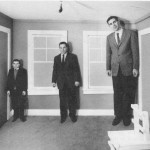
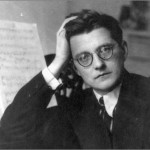
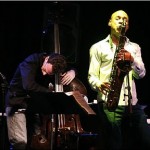
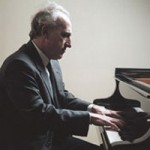
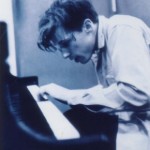 What struck me listening to the English Suites this time around (the Glenn Gould recording from 1977) is how different they are from each other. Each has its own personality. The second, for example, is expansive and refined, the first with such a long, imposing prelude, culminating in at once the most soaring and static (cathedral-like?) of gigues.* The third is the polar opposite of the second: it is hardly adorned, building patiently on its musical phrases, giving the performer time to settle them at his leisure. The fourth is expansive like the second, but of a romantic mood. The fifth sounds almost impossibly modern. I don’t know why it strikes me this way; Bach was hardly a stranger to chromaticism. As for the sixth, where to begin? At the end, maybe. The gigue is haunting. But here, I particularly appreciate the playful gavotte that directly precedes it: it sounds like children marching.
What struck me listening to the English Suites this time around (the Glenn Gould recording from 1977) is how different they are from each other. Each has its own personality. The second, for example, is expansive and refined, the first with such a long, imposing prelude, culminating in at once the most soaring and static (cathedral-like?) of gigues.* The third is the polar opposite of the second: it is hardly adorned, building patiently on its musical phrases, giving the performer time to settle them at his leisure. The fourth is expansive like the second, but of a romantic mood. The fifth sounds almost impossibly modern. I don’t know why it strikes me this way; Bach was hardly a stranger to chromaticism. As for the sixth, where to begin? At the end, maybe. The gigue is haunting. But here, I particularly appreciate the playful gavotte that directly precedes it: it sounds like children marching.
